Cookie Policy
This site uses technical and third-party cookies to perform its services. You can know the details by consulting our
privacy policy.
By continuing to browse, you accept the use of cookies.

In the exhibition design for Baj + Milton. Paradise Lost. The Paradoxes of Freedom - which presents 40 etchings created by Enrico Baj for the 1987 edition of Paradise Lost by John Milton (Mastrogiacomo Editore) - graphic elements, interior design, color palettes, and even the breathing room and spacing between works all actively contribute to the narrative structure of the display, grounded in the dialogue between written word and visual artwork.
The large colored backgrounds hosting the texts associated with each piece - visually echoing the etchings - create a direct conversation between image and word. This interplay gives equal weight to both forms and clearly and inclusively supports the curatorial concept.
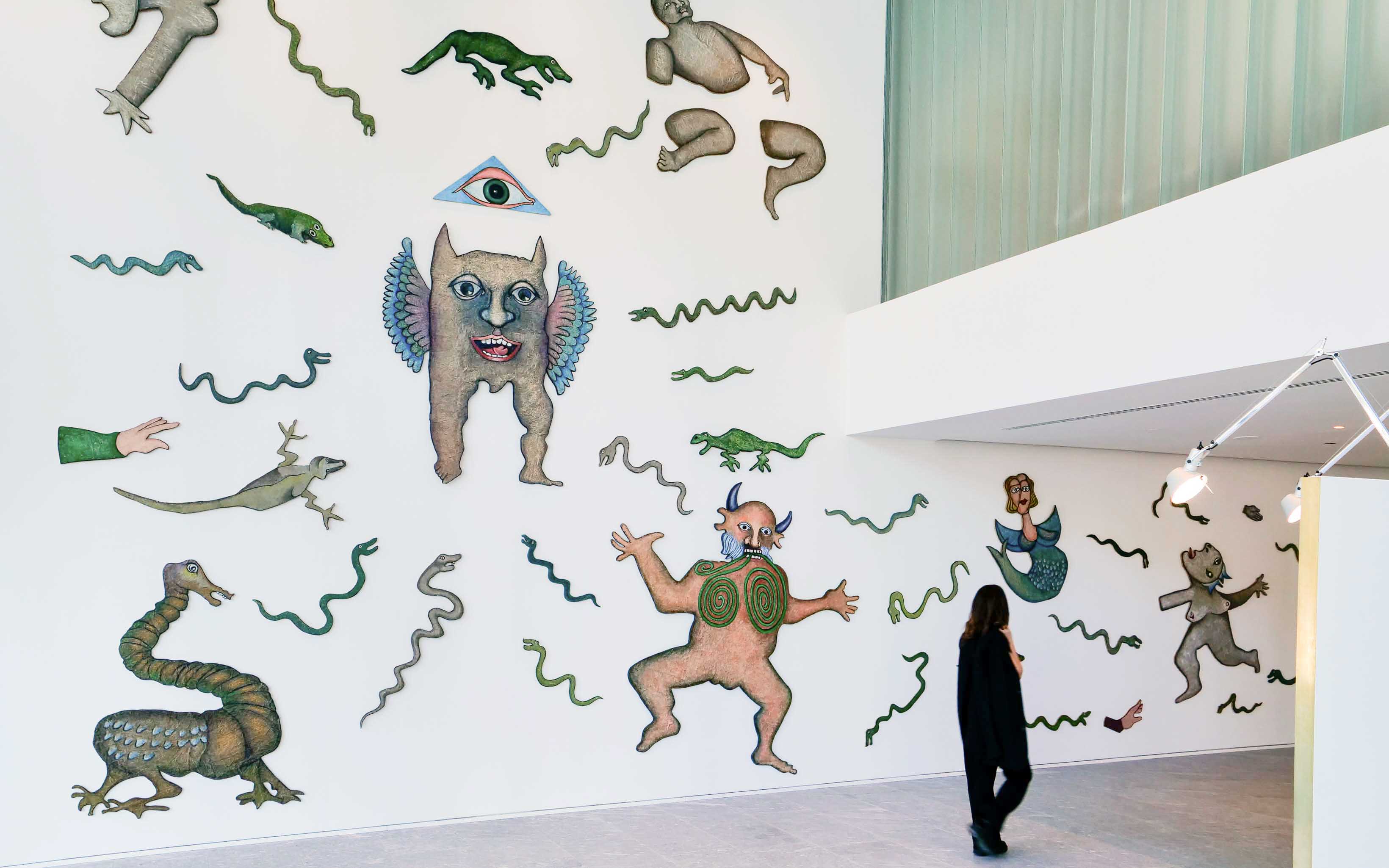


The exhibition opens with a lightweight architectural element: self-supported thanks to its subtly prismatic shape, this essential, extremely minimal partition welcomes visitors and guides their gaze. The subtle use of gold in its profile, a reference to the original frames of the etchings, immediately introduces the core theme of integration between writing and vision, between Milton and Baj. This connection is renewed in the section designed for children, guided by a narrative signage made of stylized serpents—a recurring figure in Milton’s symbolic world.
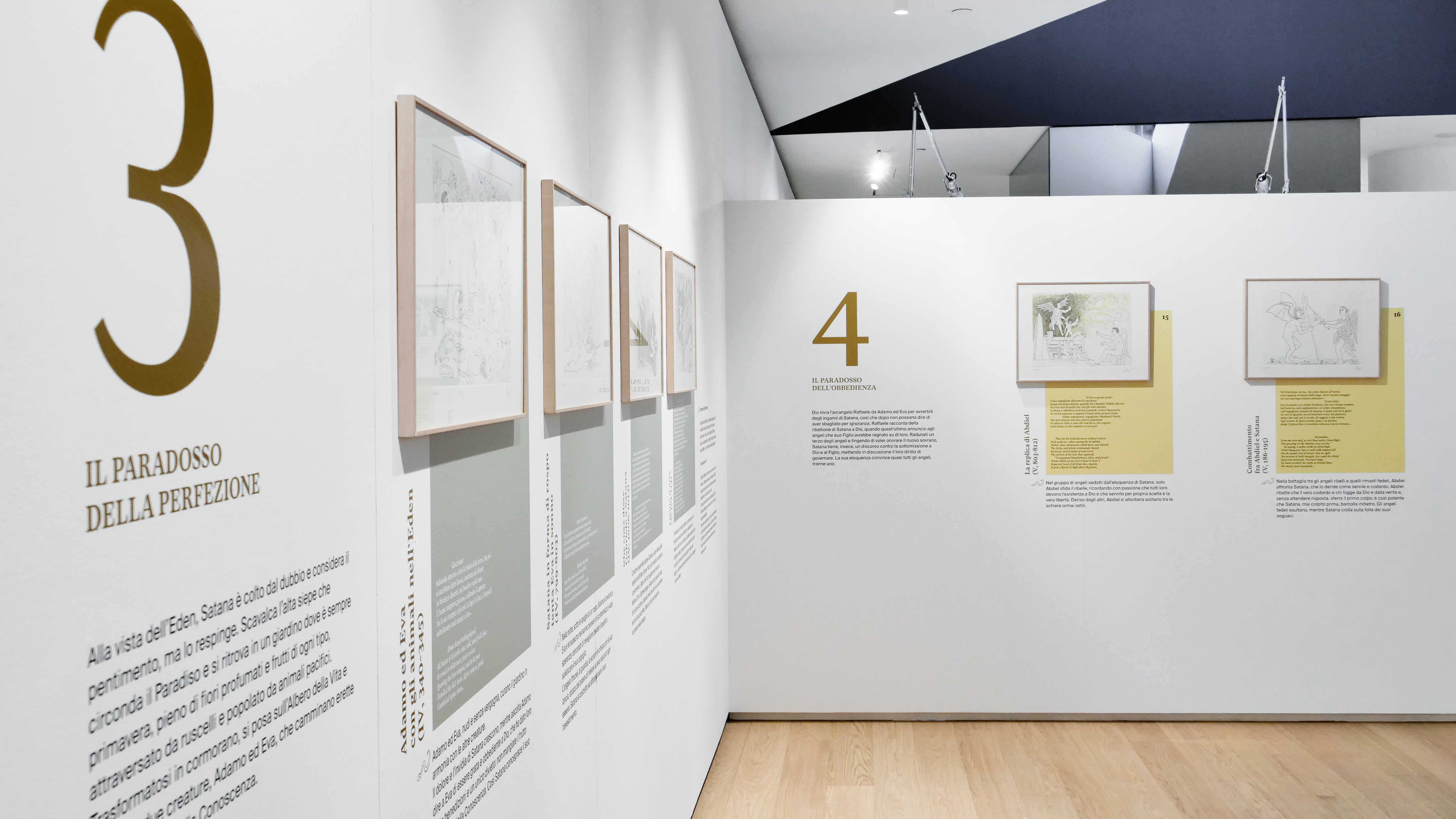
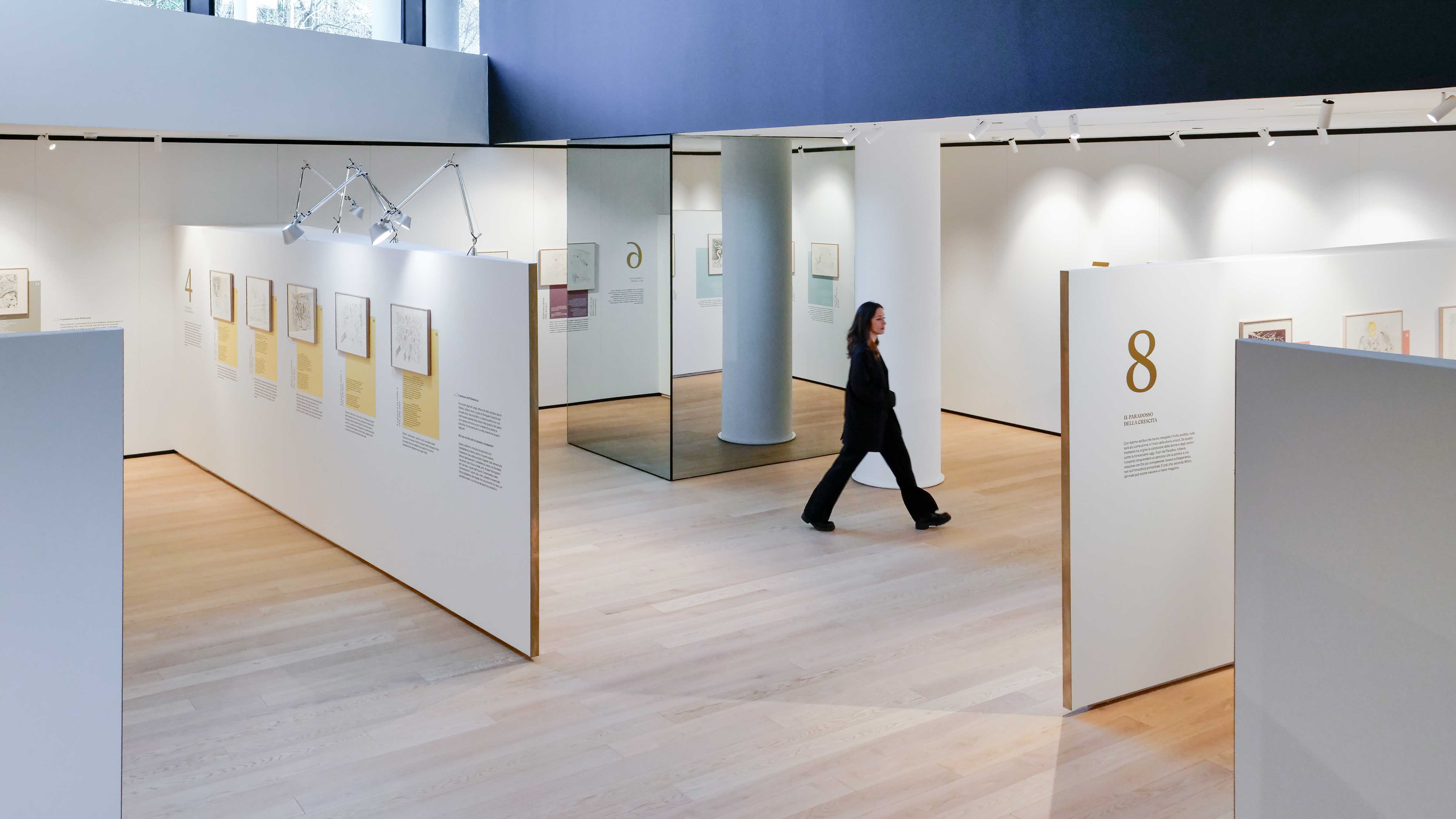
On the ground floor of BFF Gallery, the exhibition opens with a large combinatory montage of Apocalypse (1978–2001): an "open puzzle" made up of some of the more than two hundred wooden cut-outs that compose this work. Conceived by Baj as a work in progress, the installation weaves together painting and collage in a transversal narrative that moves through space and stages the archetypes of the eternal struggle between good and evil: serpents, archangels, and human figures.
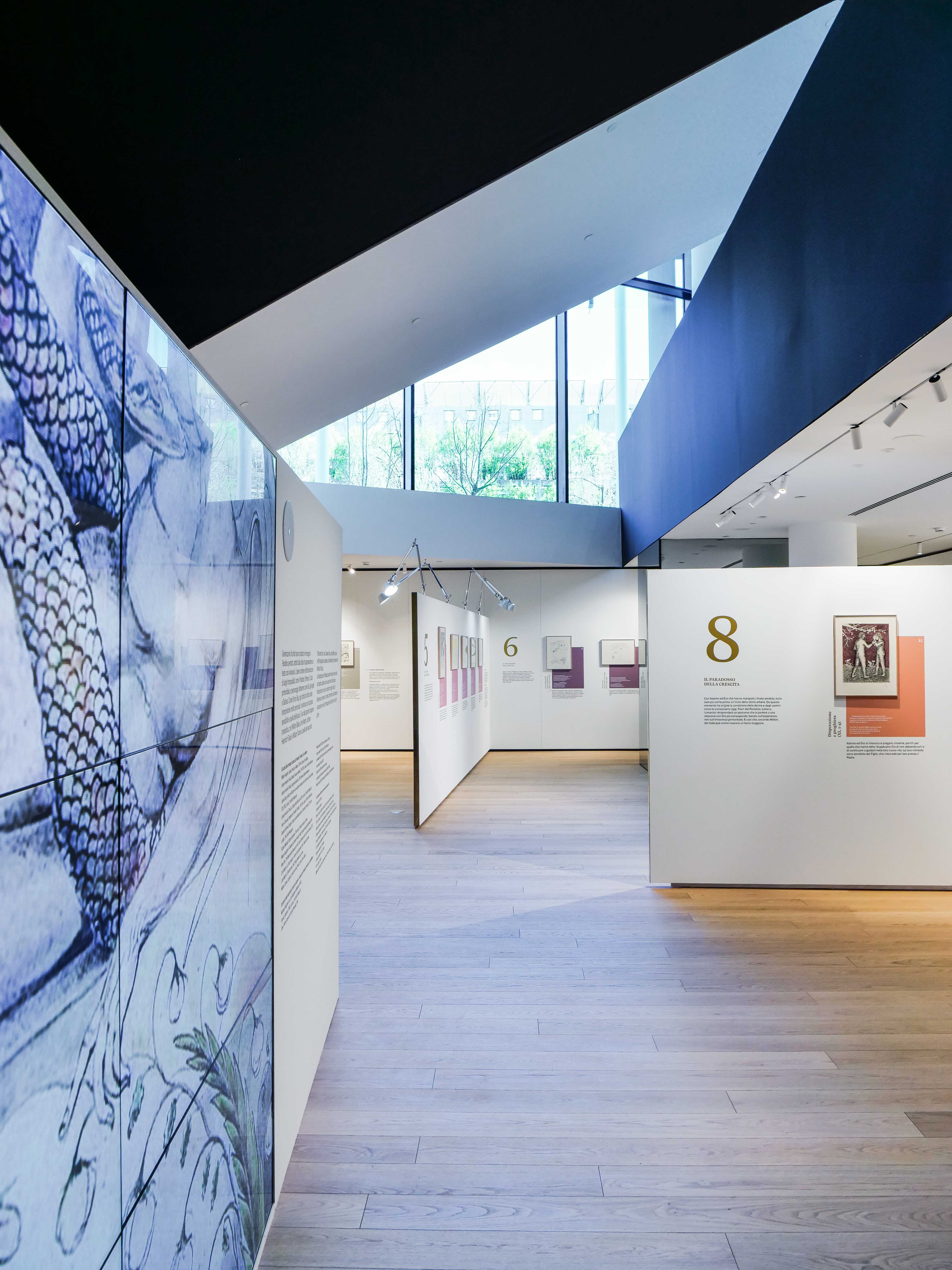
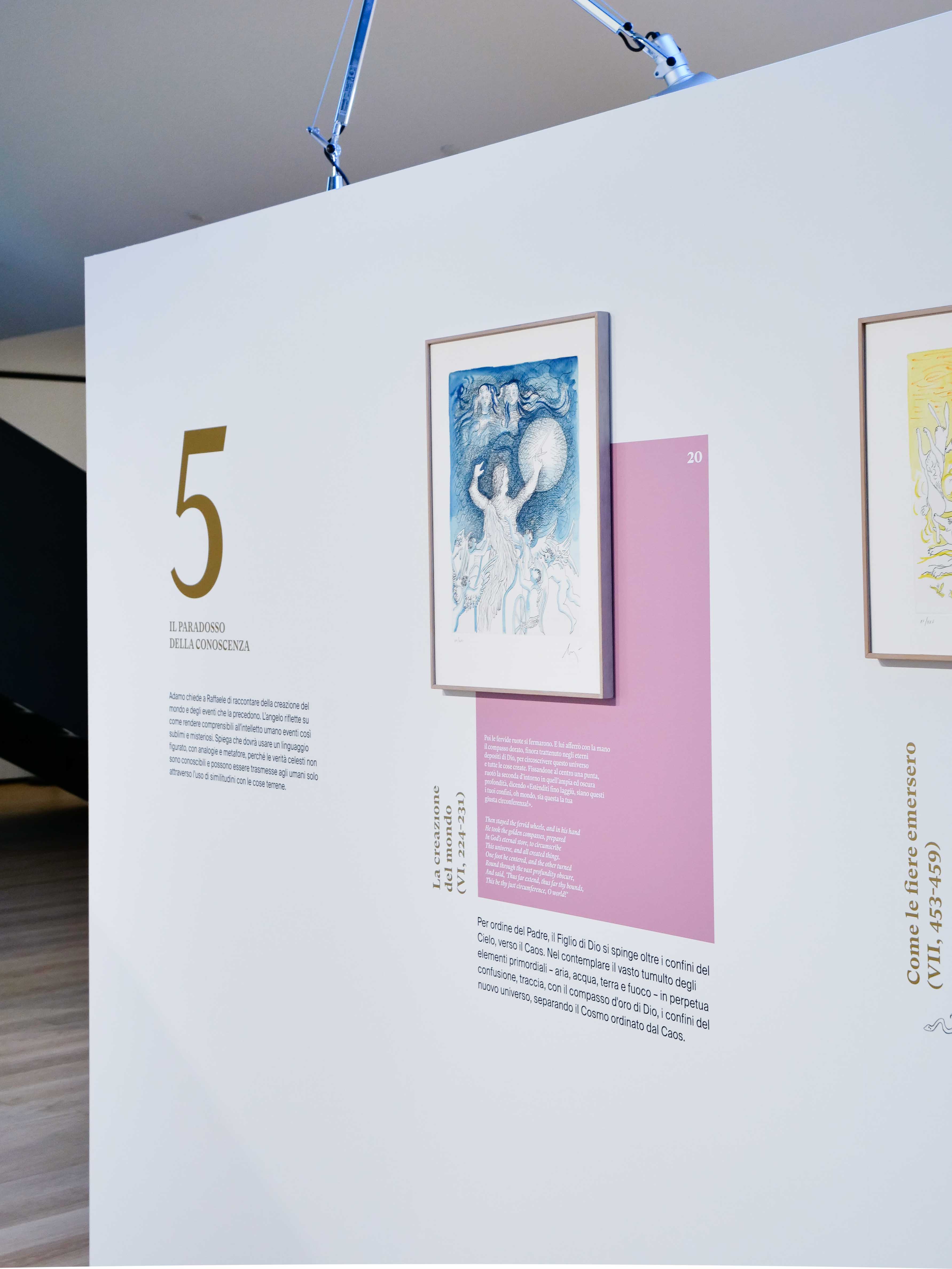
One wall features the colophon and curatorial text, while to the left, the first narrative nucleus unfolds, focusing on apocalyptic symbols—such as the eyes of God, serpents, and lizards—that guide the visitor toward the lower level.
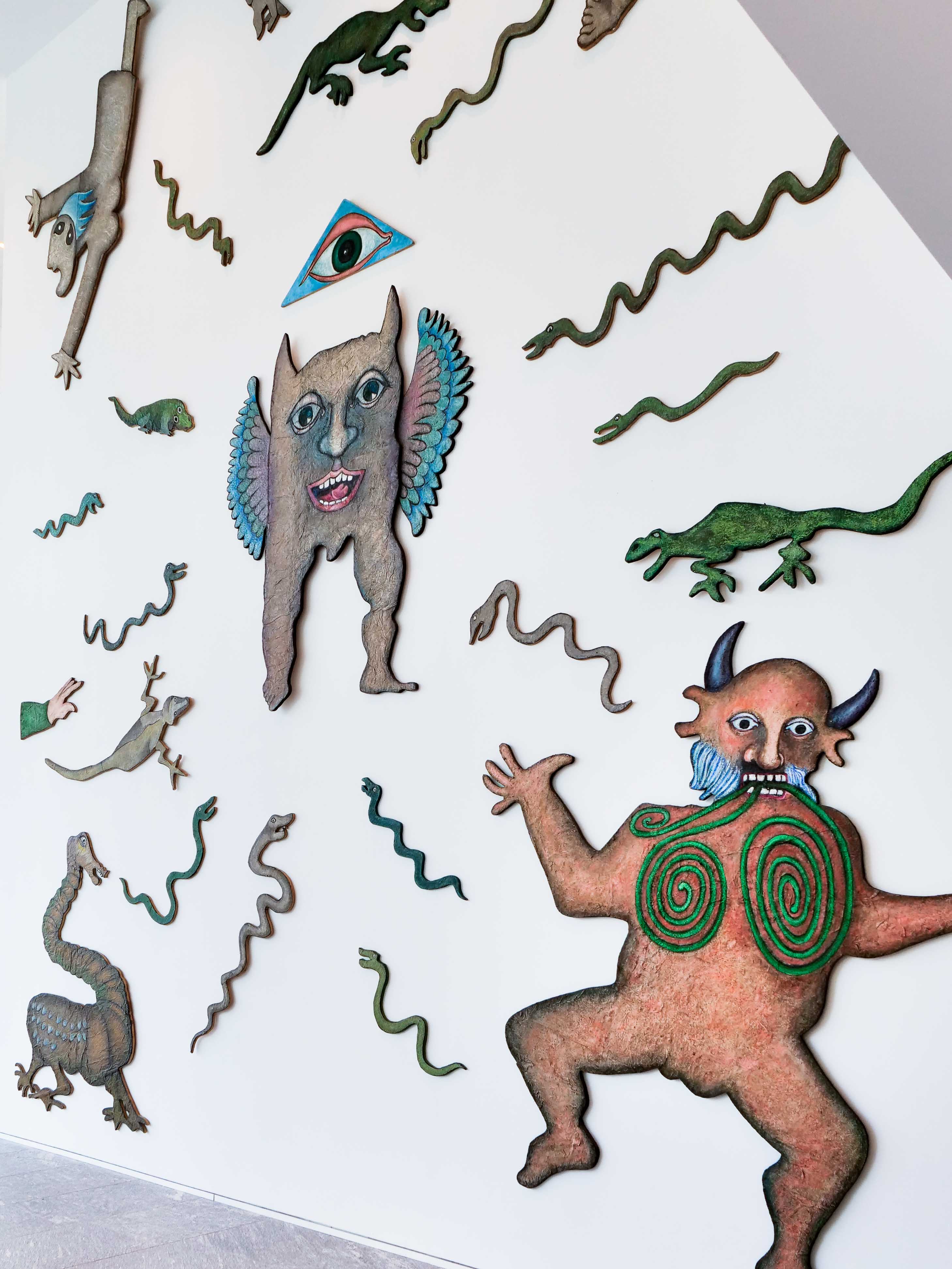
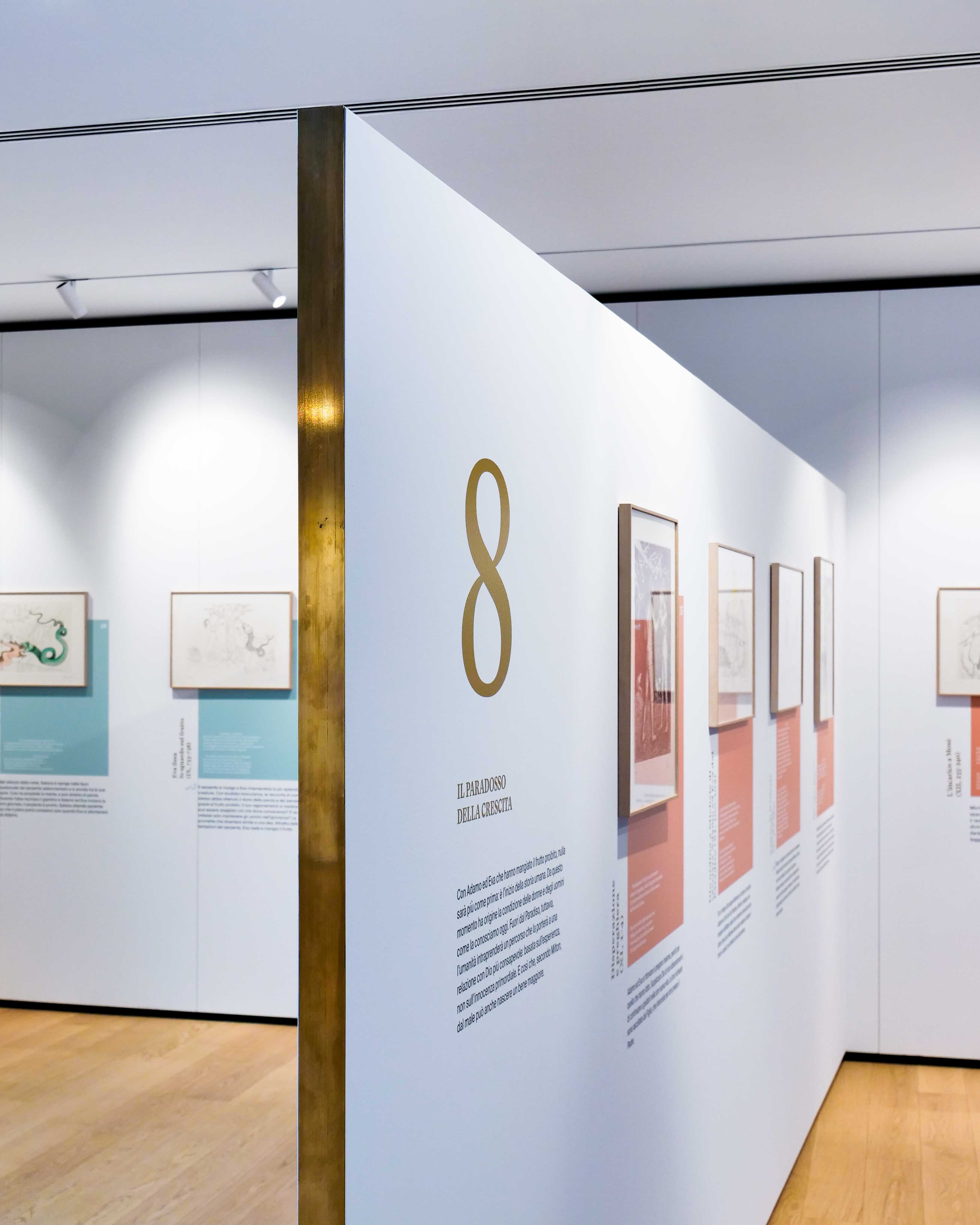
Downstairs, the forty etchings created by Baj in 1986 - at the invitation of Roberto Sanesi, who selected and translated the verses - are on display. Published in 1987 as an artist’s book, the works provide a visual interpretation of Milton’s text, articulated across eight thematic sections, each devoted to a specific “paradox of freedom.” Freedom, evil, temptation, and redemption are among the themes explored, in a continuous interplay between literary dimension and visual representation.
At the end of each section, an explanatory panel compares Milton’s vision with Baj’s artistic interpretation, inviting a direct dialogue between the two languages.
The exhibition concludes with a video presenting various contemporary interpretations of Baj’s work, offering a collective and current perspective on an artistic vision that continues to resonate today.
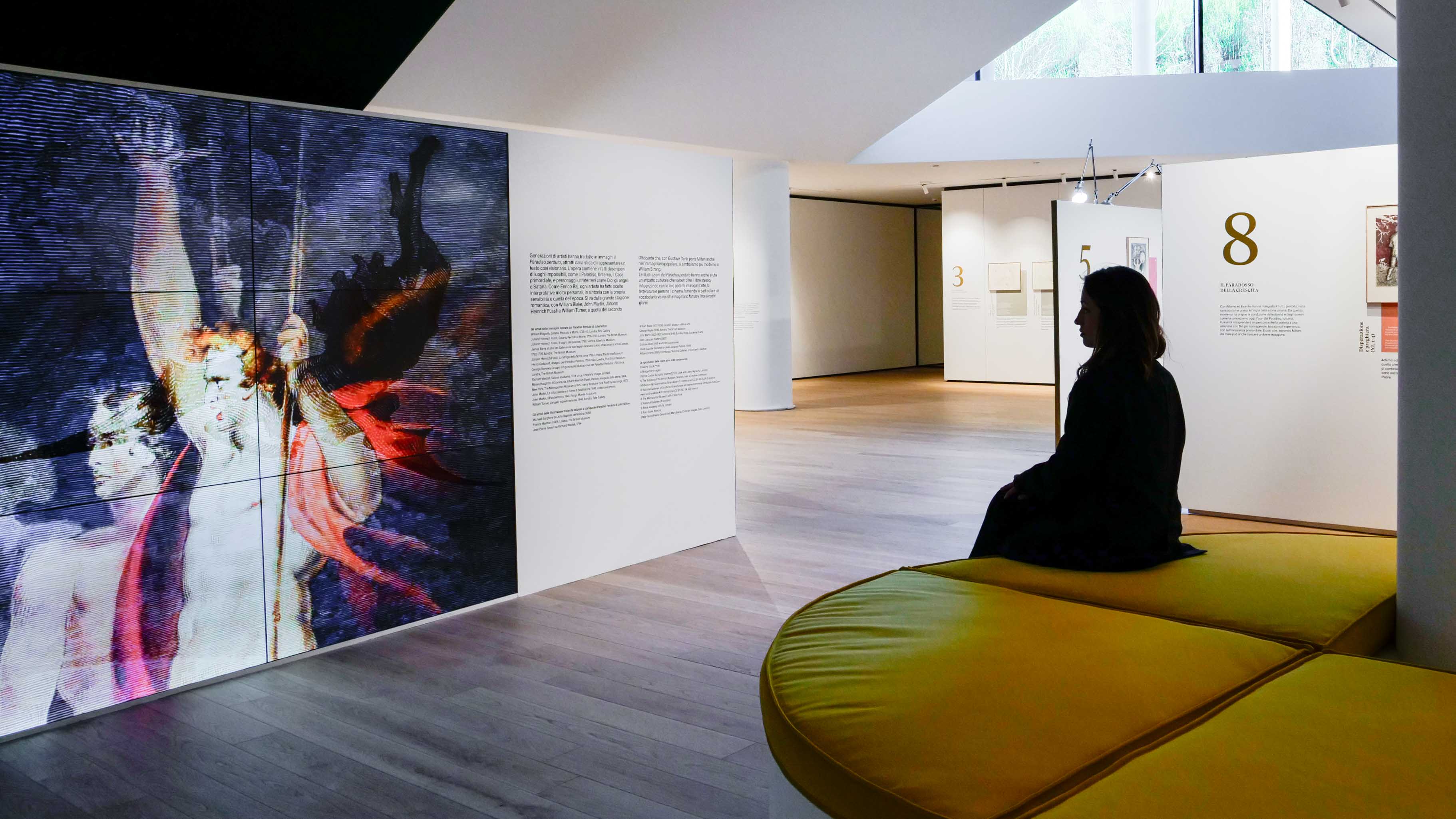
Laura Dellamotta
Giovanna Gardi
Alessandro Masserdotti
Fabrizio Pignoloni
Giuseppe Cirillo
Maddalena Silva
Camilla Guerci